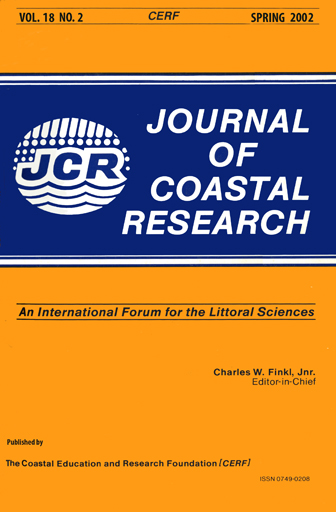Geostatistical Estimation of Short-Term Changes in Beach Morphology and Sand Budget
Keywords:
Profiles, trend-surfaces, variograms, kriging, morphology, sand budgetAbstract
Accurate representations of beach morphology are required to address a number of research and management questions, including estimation of beach volume change. In this study, variogram modelling and ordinary kriging were used to determine short-term changes in beach morphology and sand budget, based on daily surveys of 16 beach profiles along a 500-m section of Mangawhai Beach, New Zealand. Beach elevation data were de-trended by fitting planar trend surfaces. Experimental variograms displayed a high degree of spatial continuity and there was little ambiguity involved in fitting models. Kriged beach elevations were re-combined with the trend to construct beach surfaces. Beach volume confidence intervals were derived from the trend residuals of sampled beach elevations. The difference-of-means test was used to identify statistically significant changes in beach volume from the daily profile data. On average, statistically significant changes in beach volume were detected every 5.8 days. At least 8 equally spaced profiles were required to reproduce the beach morphology to a similar level of accuracy as the complete data set. Sample location was equally important as the number of samples in minimising estimation errors. The questions of how often and how intensively to sample for monitoring beach sand resources can be answered by conducting a pilot geostatistical study and by considering the objectives of a particular study. Geostatistics provides tools to make informed decisions about beach monitoring.


